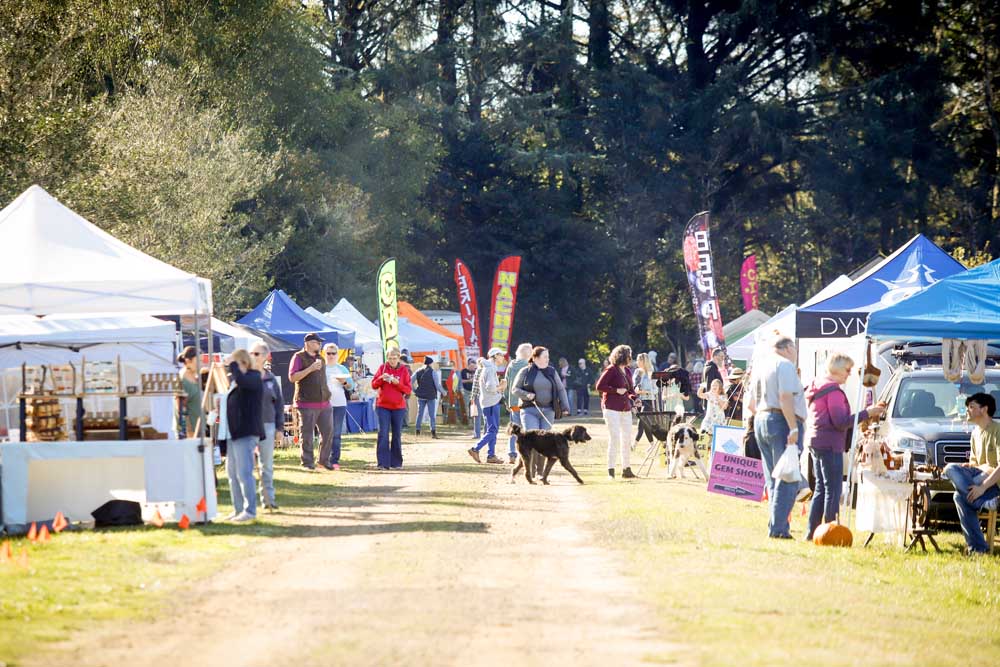Still the berry best: Cranberry Festival celebrates county’s top fruit
Published 8:15 am Monday, October 14, 2024

- {span}Attendees browse artisan craft and vendor stands at the 4th annual Cranberry Festival on Saturday, Oct. 12, at Cranguyma Farms.{/span}
LONG BEACH — Crimson berries bobbed in a bog below a bluebird sky last Saturday at Cranguyma Farm, the culmination of a fall harvest celebration centered on Pacific County’s most prolific native fruit.
Trending
The 200-acre, fifth-generation family farm along Sandridge Road, owned and operated by the Glenn family since 1940, was among a constellation of farms celebrating and demonstrating the fall harvest last Saturday, Oct. 12, and Sunday, Oct. 13 — including the WSU Cranberry Research Foundation along Pioneer Road.
Cranberries vines bind past and future
The tart, native fruit has been farmed on and around the Long Beach Peninsula since the late 1800s, according to WSU, and today comprises approximately 1,500 acres across Pacific County, including 120 acres dedicated to cranberries at the Cranguyma Farm, among the biggest in the county. The native berry was also previously embraced by some Indigenous groups, who would mash and mix cranberries with wild fish and game to make pemmican, a calorie-dense food that aided survival during the winter months.
Today, cranberries continue to be an important cash crop along the coast, particularly for local farmers along the peninsula, helping generate more than $9 million in annual sales, according to figures from the 2022 Agriculture Census. A majority of locally produced cranberries are purchased by the Ocean Spray Co-Op, destined for juice production.
This year’s crop
The USDA forecasts the U.S. cranberry harvest will be up slightly this year, raising prospects for prices to fall.
Farmers in the four leading cranberry states will produce 82.4 million pounds, up 2% from 2023, USDA predicts.
Wisconsin bogs will yield 49 million pounds, more than half the total, but that would be less than last year’s crop of 50 million pounds, the USDA anticipates. The other three states and their predicted yields are Massachusetts, 22 million pounds; New Jersey, 5.8 million pounds; and Oregon, 5.6 million pounds. USDA discontinued forecasts for Washington several years ago.
Ilwaco cranberry farmer Malcolm McPhail said he anticipates prices will drop.
“It’s going to go down because Wisconsin had such a good crop [in 2023]. We have more berries than we need,” he said. “Here comes Wisconsin again with another large crop — not as big as last year, but still quite big.”
Prices declined a decade ago as a cranberry surplus grew. Growers approved volume controls in 2017 and 2018. The surplus went down and prices rebounded.
Cranberries sold for an average of 37.2 cents a pound last year, compared to 30.2 cents in 2017, the year the surplus peaked, according to USDA.
The average price has dropped the past two years. It was 39 cents a pound in 2021. Volume controls, however, are no longer an option to boost prices. They did not apply to imported cranberries or small cranberry handlers and farmers, with the support of the Ocean Spray cooperative, voted to disband the marketing committee last year.
“You just produce as much as you can for your farm. That’s the way it is,” McPhail said. “Our aim is to make our farms better.”









